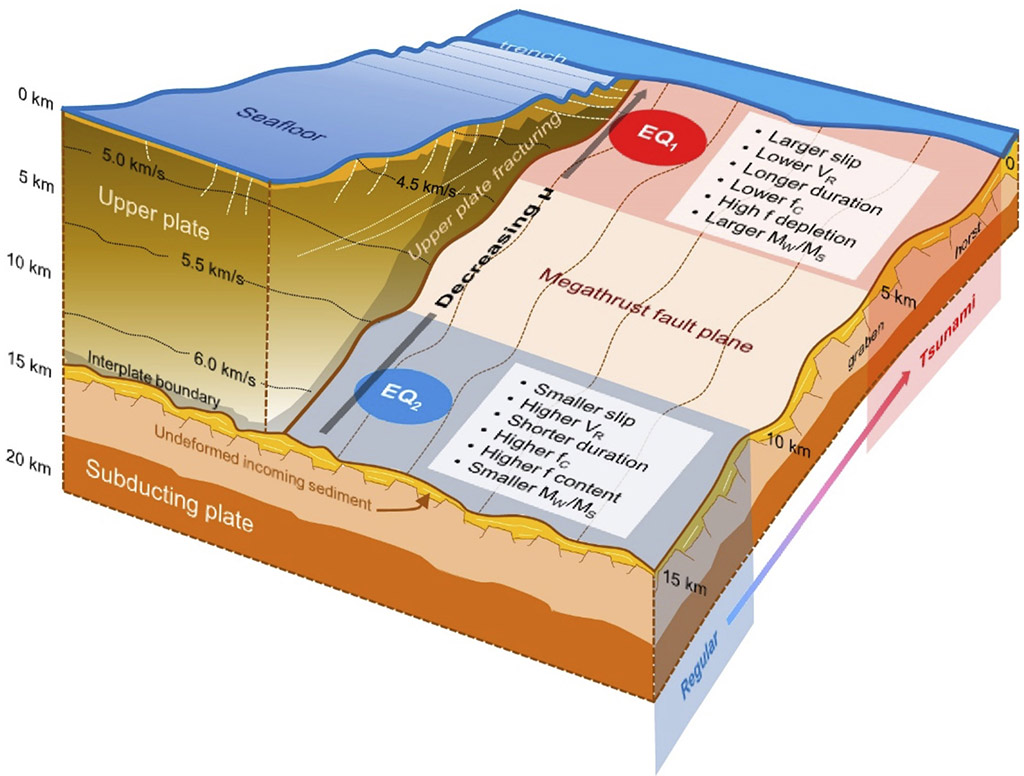The study allows explaining the behaviour of large earthquakes, predicting their potential to generate tsunamis more accurately than any previous method. The model explains why some moderate seismic events in the past generated anomalously large tsunamis and solves physical paradoxes of previous models.
After decades of research there is no conventional model that explains earthquake’s behaviour, so that understanding seismic rupture is still one of the major open questions in Earth Sciences. For instance, there is no explanation for the systematic variation of properties of seismic rupture progressing from deep to shallow depth along faults. This uncertainty has led to underestimate earthquake capacity to generate tsunamis, making it difficult to forecast their associated risks. For instance, the Sanriku event (Japan) in 1896 caused a tsunami up to 38 meters high, devastating several coastal towns and causing more than 22,000 victims. The arrival of the tsunami took local residents by surprise, because the intensity of the earthquake that preceded it was moderate. Similarly tragic examples are tsunamis generated by recent giant earthquakes, like Banda-Aceh in Indonesia (2004) and Tohoku-Oki in Japan (2011), with tsunamis larger than expected, leading to unforeseen catastrophic situations such as flooding of Fukushima nuclear power plant.
We ??propose a new conceptual model that explains various essential characteristics of earthquakes and predicts their tsunamigenic potential. Changes in earthquake rupture behaviour with depth are not understood and are attributed to local variations in the physical mechanism operating when a fault is seismically slipping. In contrast, we show that they are due to systematic changes in the rigidity of the rocks that rest on the mega-faults that generate the earthquakes, and that fracture and deform during the seismic rupture. Measuring changes in rigidity with depth allows to explain the speed of propagation and duration of seismic ruptures, the amount of slip on faults, changes in amplitude of the generated seismic vibration, and earthquake magnitude.
Reference
